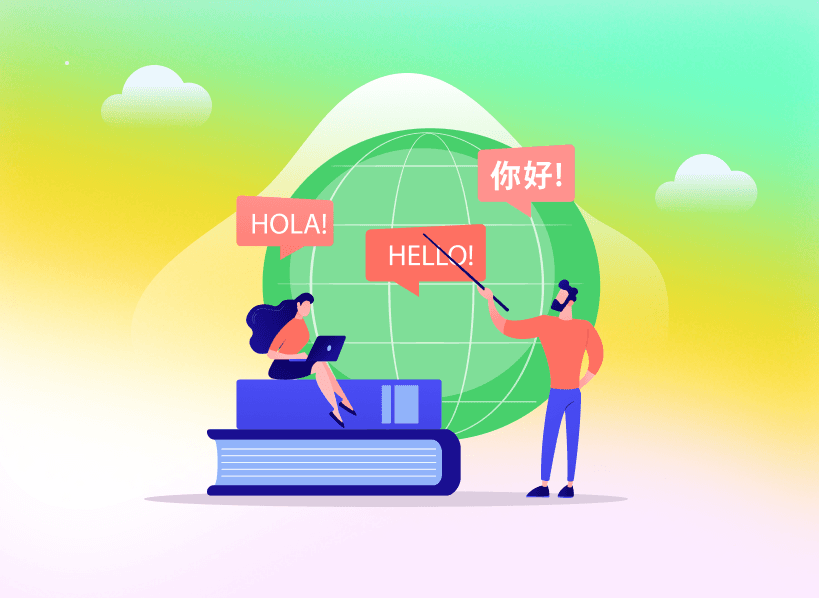


Apr 23, 2025
-
By Ivan
Interpreter vs Translator: Which One Do You Really Need?
You're in a meeting with an international client — the conversation is flowing, but there's a language barrier. You panic.
Do you need a translator or an interpreter? Aren’t they basically the same?
Spoiler: They’re not.
In the world of multilingual communication, choosing the wrong expert can lead to awkward misunderstandings or even costly mistakes.
As an example of just how costly miscommunications can be for organizations, research by Slator shows that 49% of global executives reported financial losses stemming from language barriers.
Furthermore, 64% of companies admitted to losing international deals due to a lack of multilingual employees.
That’s why understanding the difference between an interpreter vs translator is more important than ever, especially in business, legal, and global content settings.
Let’s decode the confusion once and for all.
Translation is the process of converting written content from one language into another while preserving its original meaning, tone, and context. A translator’s job goes beyond just replacing words — it involves understanding the cultural nuances, idiomatic expressions, and the intent behind the message to ensure accuracy and clarity in the target language.
This task requires a strong command of both the source and target languages, as well as subject-matter expertise, especially when dealing with technical, legal, or medical documents.
Whether it’s books, websites, user manuals, legal contracts, or marketing materials, translators focus on delivering written content that feels natural to the target audience while remaining faithful to the original text.
Interpretation is the process of converting spoken language from one language to another in real time. Unlike translation, which deals with written content, interpretation focuses on verbal communication and happens on the spot — during meetings, conferences, courtrooms, medical appointments, or live broadcasts.
Interpreters must think and react quickly, often without the luxury of pausing or reviewing content. They need to capture not only the words but also the speaker’s tone, emotions, and intent to ensure the message is conveyed accurately and clearly.
Here are some of the similarities between translation and interpretation:

Here are some of the differences between translation and interpretation:

 Need a fast and reliable way to translate content without switching between tools or relying on clunky software? Kroolo AI Translator instantly and accurately makes it incredibly simple to convert text from one language to another. Whether you're a student working on an assignment, a marketer localizing a campaign, or a product manager updating specs for a global team, Kroolo handles it all in just a few clicks.
Need a fast and reliable way to translate content without switching between tools or relying on clunky software? Kroolo AI Translator instantly and accurately makes it incredibly simple to convert text from one language to another. Whether you're a student working on an assignment, a marketer localizing a campaign, or a product manager updating specs for a global team, Kroolo handles it all in just a few clicks.
Start by copying the text you want to translate — from emails, documents, social posts, or web pages. Paste it directly into the translation box. Kroolo automatically detects the original language, so you don’t have to guess.
Click the Translate button and watch the magic happen. Whether it’s a few lines or a full page, Kroolo’s AI delivers fast, context-aware translations across 45+ languages including French, Spanish, German, Chinese, and more.
Once the text is translated, you can make adjustments right in the editor. This is especially useful for fine-tuning tone, vocabulary, or regional expressions — making the output feel more natural and aligned with your brand or purpose.

Kroolo AI Translator is perfect for a wide range of content types:
Whether you're a content creator, marketer, engineer, or project manager — Kroolo helps you communicate clearly across borders and produce polished content in any language.
Choosing between a translator and an interpreter depends entirely on the format, setting, and purpose of your communication. Here's how to decide what’s right for your situation:
✅ Use a Translator When:
Best for:
✔️ Website localization
✔️ Technical documentation
✔️ Marketing materials
✔️ Legal contracts
✔️ Product manuals
✅ Use an Interpreter When:
Best for:
✔️ Business conferences
✔️ Courtroom hearings
✔️ Medical consultations
✔️ Client meetings
✔️ Live interviews
Still Not Sure?
If you’re dealing with real-time, face-to-face, or virtual communication, go with an interpreter. If it’s written and needs precision, choose a translator.
And if you need help translating written content right now, Kroolo AI Translator is your go-to solution. It combines speed, accuracy, and over 45 language options to help you get the job done effortlessly.
Conclusion
When it comes to interpreting or translating content, choosing the right tool for the job can make all the difference.
Whether you need real-time spoken communication or written accuracy for documents, understanding the key differences between an interpreter and a translator is crucial for effective communication.
With the right choice, you can ensure your message reaches its intended audience without any barriers or confusion.
If you’re looking to streamline your translation process, Kroolo AI Translator offers a seamless, AI-powered solution for fast, accurate, and context-aware translations. From business reports to marketing materials, Kroolo ensures that you can communicate effortlessly across multiple languages, anytime and anywhere.
Start using Kroolo AI Translator today and bridge any language gap with ease!
Tags
Productivity
AI